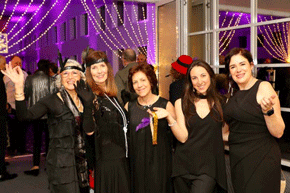Why is there a lion on the emblem of the city of Jerusalem?…ask the rabbi
Rabbi Raymond Apple served for 32 years as the chief minister of the Great Synagogue, Sydney, Australia’s oldest and most prestigious congregation. He was Australia’s highest profile rabbi and held many public roles. He is now retired and lives in Jerusalem.
THE APOCRYPHA
Q. What are the Apocrypha?

Rabbi Raymond Apple
A. The Apocrypha are the “hidden or secret books” excluded from the Hebrew Bible though accepted in some Christian versions.
The Apocrypha contains some colourful stories, though there are also some slight works which appear to lack classical Biblical quality.
Apart from the contents of the Apocrypha in its present form, there were a number of “external books” prohibited to Jews. Examples, in the Talmudic view (Sanh. 100b), are Sadducean works, regarded as heretical, and the book of Ben Sirach (Ecclesiasticus), deemed to be trivial. Bertinoro (the “Bar-T’nura”) adds the works of Aristotle, love songs and novels. The Tiferet Yisra’el adds the works of Homer and the writings of idolaters.
Clearly these are books which the sages considered to be dangerous from either a theological or moral point of view or both. But they are books deriving from a later age when there was a fear that Greek culture would spread.
As far as the Apocrypha itself is concerned the criterion appears to be that works written too late (after Ezra) and/or lacking sanctity (i.e. without evidence of the prophetic spirit or the ru’ach hakodesh) were regarded as unsuitable. The test was therefore the date and/or the content of the books. Since such works usually contained Divine names, they were not destroyed but “hidden away”.
However, some Apocryphal material parallels passages in the Talmud (e.g. some parts of Ben Sirach); some material in the Apocrypha is esteemed for its wisdom; some (e.g. Maccabees) is useful as a historical source – but Apocryphal books are not found in the Tanach and are not part of the synagogue readings.
LIONS IN JERUSALEM
Q. Why is there a lion on the emblem of the city of Jerusalem?
A. Lions were known in Biblical times. The lion had several Hebrew names, especially “arieh”. In Jacob’s final message to his sons (Gen. 49:9) he calls Judah “gur arieh” – “a lion’s whelp”.
The Biblical lion was probably not the great African lion but a smaller variety, though it still symbolised strength, majesty and valour.
Israel as a whole are compared to a lion (Num. 23, 24). Both David and Solomon are stated as having killed a lion (Judges 14, I Sam. 17). Lions were part of the decoration of the Temple (I Kings 7:29) and golden lions stood on either side of Solomon’s throne and on both sides of its steps (I Kings 10:19-20). A lions’ den plays a major role in the story of Daniel.
In rabbinic tradition, God’s voice is powerful like the roar of a lion (Ber. 3a), and lions are introduced into many other stories and contexts. The Talmud calls it the king of beasts (Hag. 13b: is this the first time this phrase is used?). The Mishnah urges a person to be as brave as a lion to do the Divine will (Avot 5:20).
In time the lion became a common motif in Jewish ceremonial art and is usually the only specific creature used in synagogue decoration; it very frequently flanks the Ark curtain, Torah covers and Torah breastplates. Clearly it represents dignity, majesty and strength. But is this the reason for its association with Jerusalem?
This is a possibility, but it must be pointed out that the Biblical name Ariel used for Jerusalem several times in Isaiah 29 may mean, not “lion of God”, but “altar-hearth of God”.
HEIDENHEIM & ROEDELHEIM
Q. Why do some heirloom prayerbooks bear the names Heidenheim and Roedelheim?
A. Wolf Benjamin, the son of Shimshon, born in 1757, used to call himself “Ish Heidenheim”, a man from Heidenheim, the village in Bavaria from which he originated. His early studies made him a passionate believer in the need for scrupulously accurate texts of Hebrew works.
By the end of the 18th century he had a printing shop in Roedelheim, a suburb of Frankfort-am-Main. Not only did he publish the works of other authors, but he produced books of his own, especially machzorim for the festivals and two editions of the daily prayer-book. He was very careful with the Hebrew text and the quality of his printing.
The title page of his books bore his Hebrew signature, though this did not achieve the desired effect of preventing plagiarism or pirating of his works. Nonetheless, genuine Heidenheim/Roedelheim editions were always highly respected and found their way all over the world. As a result, there are still copies in many Jewish homes, though pirated editions betray their inauthenticity by their statement in small letters, “as correct as any edition ever printed”, followed in large print by the name “Roedelheim”.
It is said that though countless tombstones in the Jewish cemetery in Roedelheim were vandalised by the Nazis, Heidenheim’s grave survived.






